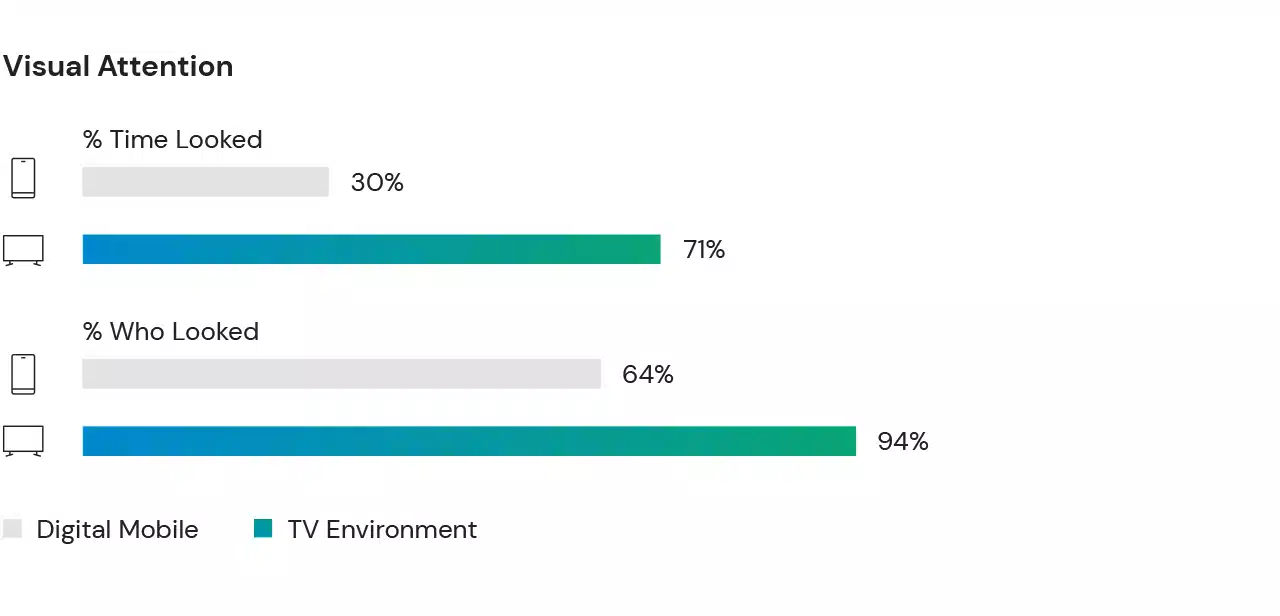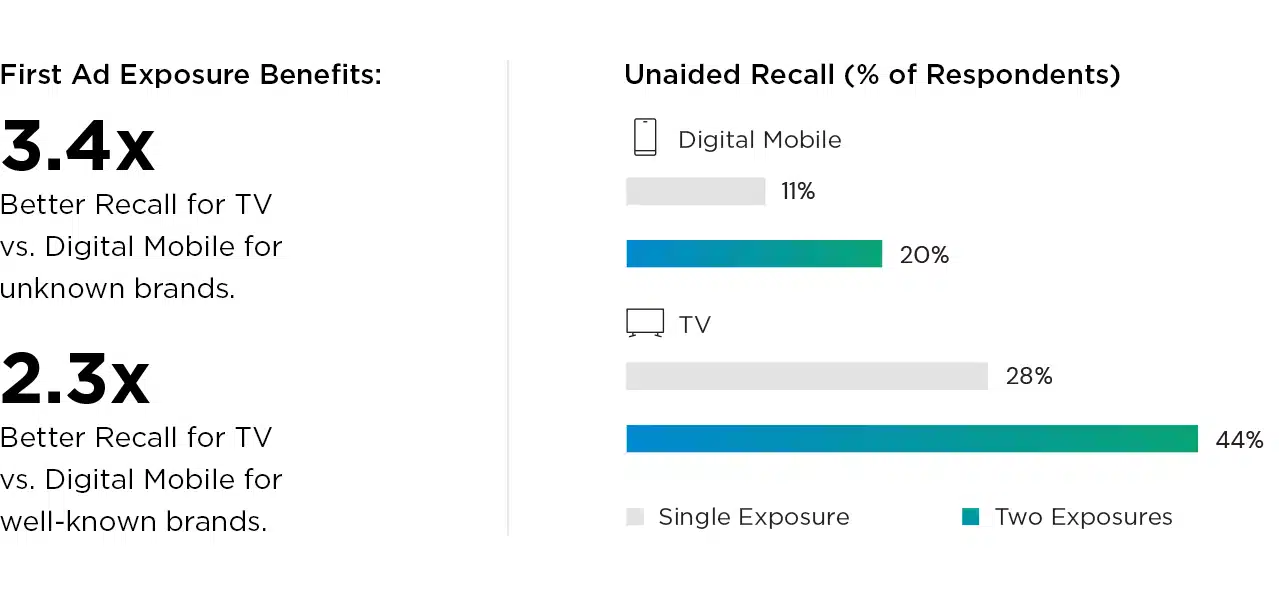When it comes to advertising, there are numerous media and platform types to choose from, and every company’s ideal media mix is unique. Multiscreen TV is an important advertising vehicle for all brands to incorporate into their marketing strategy, as it enables the opportunity to grow and scale by engaging new audiences and making a lasting impression. It can be an especially important tactic for direct-to-consumer (DTC) and performance marketers looking to enhance their brands by going beyond digital and social outreach.
The Foundation of Multiscreen TV Advertising Campaigns
The latest TV Viewership Report (TVR) for 1H 2022 showcases how and why traditional TV is the foundation of multiscreen campaigns and continues to drive the majority of campaign reach. The marketing resource uses a hefty dataset including aggregated viewership data collected from more than 29 million households and 35,000+ multiscreen campaigns producing over 3 billion impressions. The report reveals that viewers spend an average of 6 hours and 17 minutes per day watching traditional TV across an average of 29 networks per household.1 This means advertisers have ample opportunities to reach potential customers while they’re tuning into their favorite networks and programs throughout the day.
TV Makes Memories
Not only is TV crucial for reaching new audiences, but it’s also proven to be a platform that consistently drives results. A recent consumer study conducted by Effectv and MediaScience, TV Makes Memories, highlights how TV plays a role in building engagement and brand memorability. Here are just some of the benefits of adding TV to an advertising strategy for both DTC and non-DTC brands found in this study:
Enable Memorability and Grab Viewer Attention
Ad exposure on several platforms – streaming, mobile, and on-demand – doesn’t impact memory by grabbing the attention of the viewer the way that traditional TV does. Ads viewed in a “TV environment”, as detailed by the TV Makes Memories study, garnered 71% of visual attention compared to only 30% of visual attention from viewers who watched ads in a “digital mobile environment.”2 This may somewhat be attributed to the much larger screen size of a TV screen, which can have fewer distractions than a digital ad on a mobile device. In fact, 36% of participants never even looked at the digital mobile advertisement (compared to only 6% for the TV ad).2
Establish Brand Trust
According to Nielsen research, TV is the most important channel for e-commerce brands to build trust, credibility, and awareness – and findings from the TV Makes Memories study support this claim. TV has a far-reaching impact on building brands and garners trust with viewers, resulting in lifts in brand attitude and purchase intent.2
Increase Brand Recall
A common misconception is that TV is only effective for well-known, established brands – but the reality is, it’s an essential strategy for new, lesser-known, and emerging brands as well. Brand recall in the TV Makes Memories study was higher for ads viewed in a “TV environment” when compared to a “digital environment”. However, the benefits were even greater for brands that were being exposed to the viewers for the very first time. When compared to “digital mobile” ads, TV ads led to a 2.3X better brand recall for well-known brands and a 3.4X better brand recall for lesser-known brands.3
When looking at the effects beyond the first exposure of an ad, unaided brand recall (the ability to remember an advertisement without any external help such as clues, or visuals) increased for both TV and digital mobile after the participants were exposed to the advertisement for the second time. We also can see that the viewers that were exposed to an ad for the first time on TV were 40% more likely to recall the brand than viewers that were exposed to an ad twice on a digital mobile device.3
Drive Purchase Intent
TV is instrumental in driving consumer action and growing customer bases for new and emerging brands. It was revealed that ads viewed in the “TV environment” had 2.2X greater unaided recall and 1.3X higher purchase intent when compared to the same ads shown in the “digital mobile environment.”2 Additionally, a survey conducted by Marketing Charts in June 2022 reported that, within six months, nearly a quarter (24%) of consumers reported making an online purchase after viewing a TV commercial (compared to 16% for other video ads).
The Evolution of CTV: Streaming and Linear Combined
Connected TV (CTV) has evolved and now provides sufficient advertising options for brands looking to grow through premium streaming content. According to eMarketer, CTV environments have changed the dynamics to make advertising more accountable and effective, which is important when speaking directly to consumers. CTV enables buyers to direct their ads to more narrowly targeted audiences and monitor their campaigns through the purchase funnel.
Findings from the TVR for 1H 2022 suggest that streaming is a complement to linear TV in both reach and frequency of ads. Advertising on TV— in all its forms — is the best way to reach a large percentage of a target audience in a short amount of time, and streaming helps extend that reach by grabbing the attention of hard-to-reach households. In fact, adding streaming to your linear TV campaign can increase the chances of reaching “light” and “no TV” households by 2.6X.1
Effectv helps marketers integrate multiscreen TV into their advertising strategies to help them reach new audiences and drive results. Contact us today for more information on how to get started.
Sources
1 Comcast Aggregated Viewership Data (1H ‘22).
2 Media Science, Effectv Study, March 2022, n=188. Analysis compares two ads on digital, TV + digital ad, and two TV ads. TV comprises a traditional TV ad &/or a streaming TV ad. Digital comprises Facebook & YouTube on a mobile device.
3 Comcast Aggregated Viewership Data combined with Ad Exposure Data from TV + Effectv Streaming campaigns (2H ‘21), 20K campaigns





